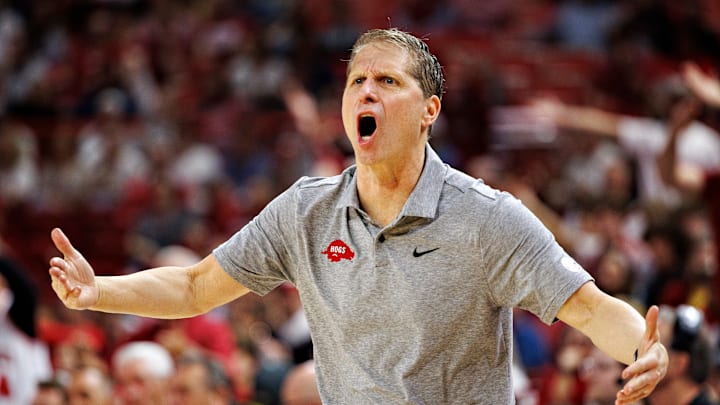Put Them On The Books Tomorrow
All of these rules, or slight variations of them, are flat out vital to maintain the soul of what makes college basketball so enjoyable.
-Collective bargaining between the players and the NCAA
This is step one for the NCAA to avoid a court battle every time they institute any type of restrictive rule. Any collectively bargained agreement would allow the NCAA to begin to properly govern in exchange for a reshaping of how the players are paid, shifting from NIL collectives to a cut of television contract and athletic department revenue. It's a no brainer for both sides at this point, the athletes can finally dip into the real money and the NCAA regains control, with an added bonus. Thanks to an eligibility cap and the majority of athletes receiving little to no financial benefit, the threat of a strike is extremely small, giving the NCAA far more control than professional leagues have. For more detail, I once again urge you to read John Fanta, who goes far deeper on the need for collective bargaining,
-Multi-time transfer restrictions
All first time transfers should be eligible to play in the upcoming season from now until the end of time. Plenty of non-athlete college students transfer (13.2% last year, per the National Student Clearinghouse). They arrive at a new school as eighteen year olds and come to realize that they don't fit in, or do well enough to attend a more prestigious institution. Perhaps their parents step in and feel that they need to be closer to home or at a school that better fits their career path. But the rare second transfer is often a very bad sign for these students.
The same is true of student-athletes, who will lose a significant amount of class credits and personal connections over multiple school changes. They will often need an extra year at their new school to be able to graduate. So I propose that all second time transfers sit out, with exceptions for graduate students, those impacted by coaching changes or transferring to an institution within 50 miles of the athlete's hometown (allow for family emergencies etc.). There will be no waivers, you either qualify for one of these three or sit out. All third time transfers will be required to sit out a year no matter what.
-Twenty-one day portal
Open the transfer portal two days after the National Championship game and allow entry for three weeks. The portal opening while the season is still going on is ludicrous. NCAA Tournament participants shouldn't have to worry about conducting recruiting visits while they are playing. Journalists shouldn't be reporting on player movement, they should be thinking about games. A later date also allows most of the coaching movement to be settled before players make a choice. And the days after the end of the season would go from a sad occasion to a hot stove extravaganza. (I'm adding a day for everyone to get home from the Final Four). On the back end, a shorter portal window means that less big time programs will start to get desperate about missing out on recruits, which should help limit late in the portal tampering.
-Launch the coaching portal
It doesn't need the same level of formality but if players can't spend all summer transferring, then a head coach shouldn't be able to leave for an assistant coaching job elsewhere in the middle of May (it just happened twice), when rosters are already coming together. Assistant coach movement doesn't carry nearly the same impact. It would be fair to rule that if a head coach leaves his job after, say April 30, he has to sit out the next season, in an attempt to prevent any very late movement that isn't an unexpected retirement.
-NIL transparency
One of the first changes to NIL needs to be end of complete secrecy on the money that players are making. First off, transparency eliminates the ability for collectives to fail to pay out on time. Secondly, it eliminates yet another advantage for the deep pocketed, who can just throw out a big number and know they'll probably win a bidding war. In this case, players and their suitors can look at comparables and determine a fair market value from the beginning. Also, it would just be really fun to be able to analyze each school's spending.
-End of NIL "donations"
All payments for the athletes should have to come from the school's basketball income, merchandising revenue or actual endorsement deals. Keep letting big donors hire them for advertisements and let fans continue to buy overpriced jerseys and basketball cards. But the constant shakedown of fans for "donations" by collectives is despicable. The individual supporters should not be bankrolling the team, the school that is profiting off them should. If this practice does live on, let's at least start calling it a payment, since donation infers that it's going to a worthy cause.
